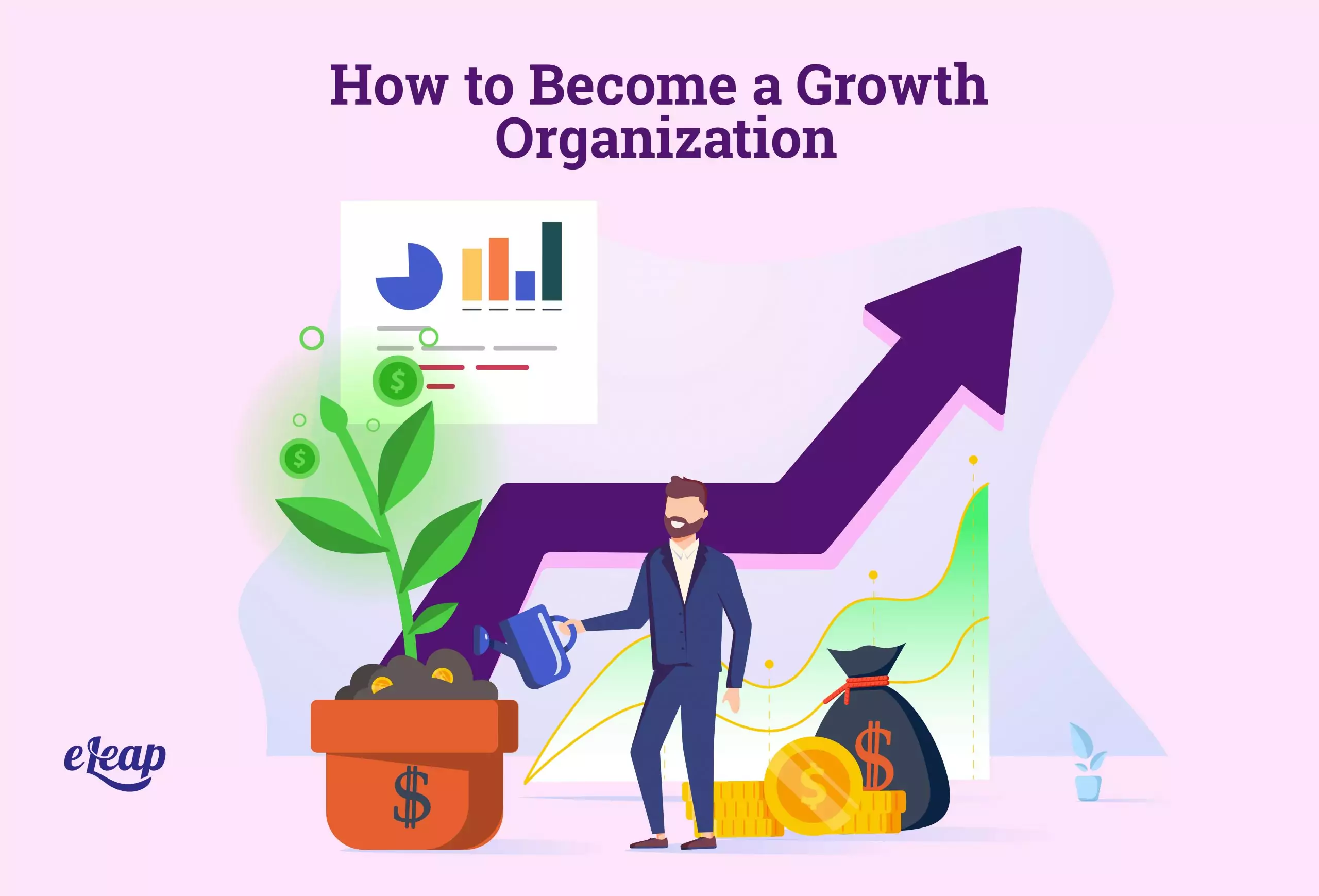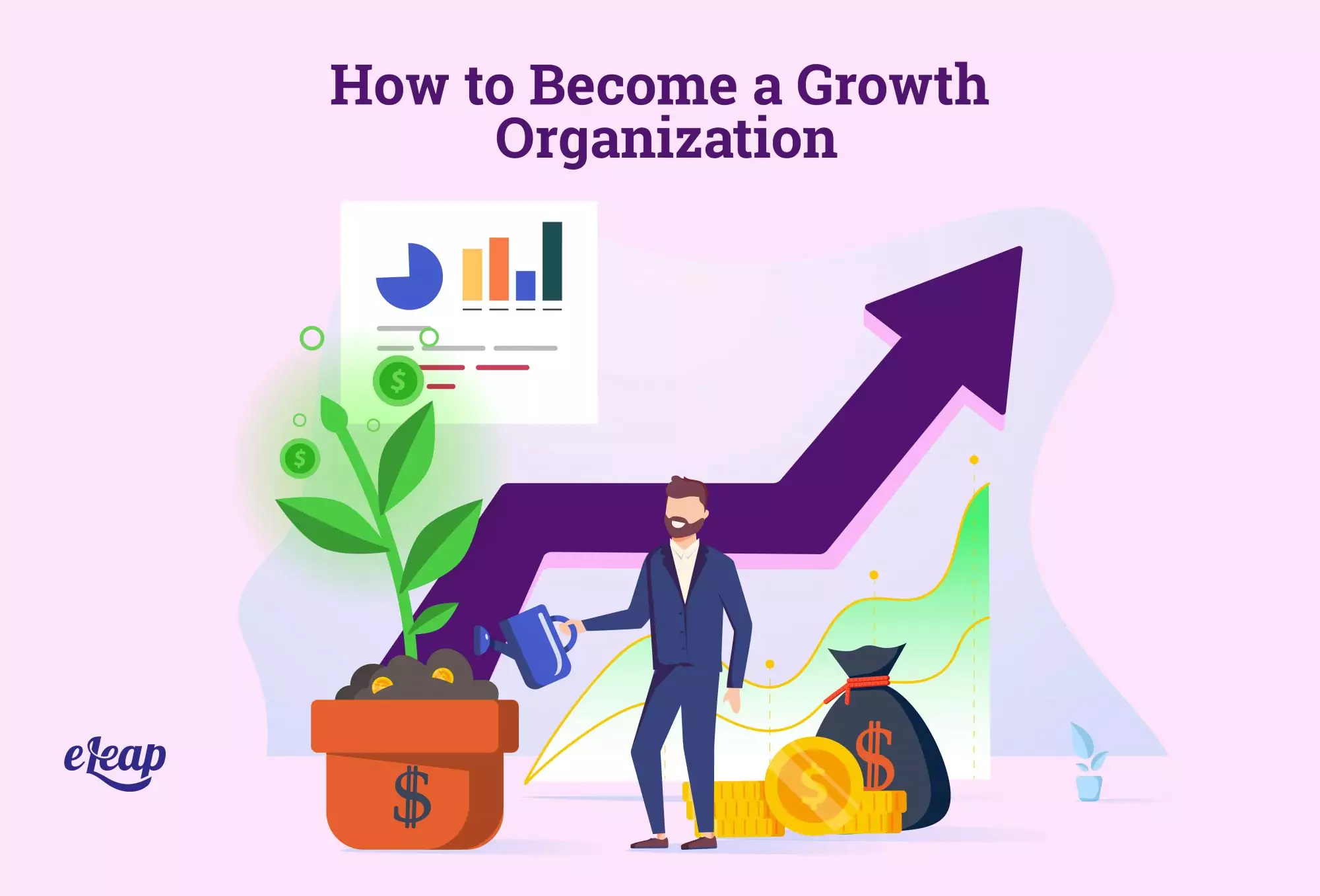How to Become a Growth Organization

There is a lot of discussion today surrounding employee strengths and weaknesses. However, we need to turn our attention to the organization’s strengths and weaknesses, as well. The wrong structures and processes in place can dampen growth and drive away needed human talent, resulting in stagnation, or even regression.
So, how does an organization become “growth-focused”? There are several important things to understand here. One of the most critical is creating a culture of employee growth and development. When employees can grow, develop, and thrive, free of negative influences and stifling structures, the entire organization does so, as well.

The Keys to Creating a Culture of Growth and Development
When people leave your organization, why are they really departing? Is it because they have found a position that is more intrinsically rewarding somehow? Is it because they found an employer offering better pay and more benefits? Actually, chances are good that they’re leaving because of something else altogether: they feel that they have stopped growing.
This is easy to understand when we look at it closely. Employees need challenges. They need growth and development. If you were to come to work every day and do the same thing, never experiencing anything different, would you find it rewarding or worth continuing? No, it would be the employment equivalent of Groundhog Day. While entertaining at first, it ultimately becomes frustrating and stymieing.
According to the Employee Job Satisfaction and Engagement Report published by The Society for Human Resources Management, almost half of those employees surveyed reported that their employer’s commitment to employee growth and development was very important to them. However, only 25% said that their employers were doing enough to support development and growth.
What do you need to do to create a culture that not only supports growth and development but embraces those concepts? There are two things:
- Find ways to increase the level of skill and knowledge employees have within their current roles.
- Find ways to support employees in terms of career development.
Both of these tie into learning and development and can be accomplished with the right learning management system (LMS).
How to Support Employees in Their Current Roles
Supporting your employees in developing the skills and knowledge necessary for their current roles is important. It is also simpler to do than you might realize. To achieve this, you simply need to combine performance management with learning and development.
This four-step framework can help you determine when, where, and how to take steps:
- Is the employee bogged down with unfamiliar tasks or responsibilities they are poorly equipped to handle? This speaks to their level of competence, which can be improved through skills training.
- Is the employee competent but not thriving because they’re required to perform tasks that they lack the skills for? This is a sign that upskilling is necessary, which can be accomplished through your modern learning management system, mentorships, collaborative training, and many other options.
- Is the employee performing well, but not quite living up to their full potential? This is a sign that additional training and development could unlock new potential.
- Is the employee self-assessing and pursuing training based on an innate understanding of their unique strengths and passions? If so, this is a sign that you have created a culture of growth and development and that your employees are free to pursue training that is both meaningful and valuable to them personally and professionally.
For most organizations, the progress from step one through step four is daunting and fragmented. Many teams find themselves stuck at the third point. After all, if employees are performing well, then what more needs to be done?
The organization is satisfied that it is reaping the right return on investment, but employees may still feel stymied, because they are not really living up to their full potential and, deep down, this resonates with them. Employees ultimately want to be the best they can be and if they’re unable to achieve that, then it begins to create a disconnect, ultimately leading to frustration and disengagement.
How to Support Career Development
Once upon a time, employees were hired to fill a specific role with little thought to where they might go within the organization over time. Today, that’s changing. It is more and more important for organizations to support employees through career development, and that requires taking an active hand in developing talent, training them for new roles, and then boosting them upward as they develop.
The unfortunate reality, though, is that managers are often of two minds here. On one hand, they want the employee to do well. On the other, there is the fear that the employee will develop and then go in search of a better job somewhere else, or that they will demand better pay and benefits in exchange for remaining with the employer.
Thankfully, you will find that most employees (but certainly not all) will remain with an employer if they feel supported and able to move forward. The inevitable disconnect and detachment only occur when they feel that they no longer have growth opportunities. By committing to helping them learn, grow, and move upward, you create an insurance policy against them leaving and the costs and challenges that occur when you lose key talent.
Even when employees do leave an organization that supports and values them, the situation is different. These employees tend to leave on good terms, and they’re more likely to recommend their previous employer and even refer others to the company. They become advocates and brand ambassadors even though they’re no longer on the payroll.
Growth and Success
With a commitment to learning and development, personal and professional growth, and creating a culture that values development, it becomes possible to achieve meaningful, lasting success. Not only will it help improve the situation for your current employees, but you become a growth organization – an employer of note – which will attract top talent.